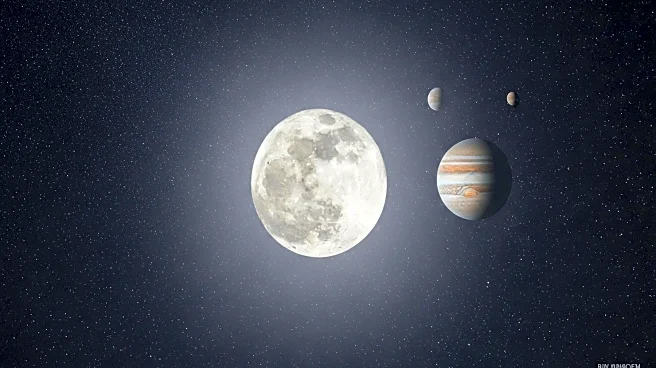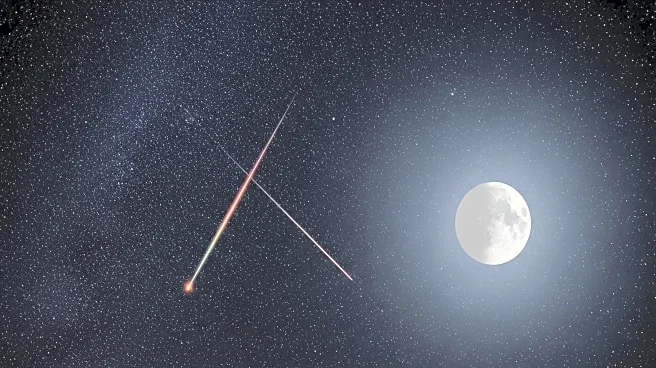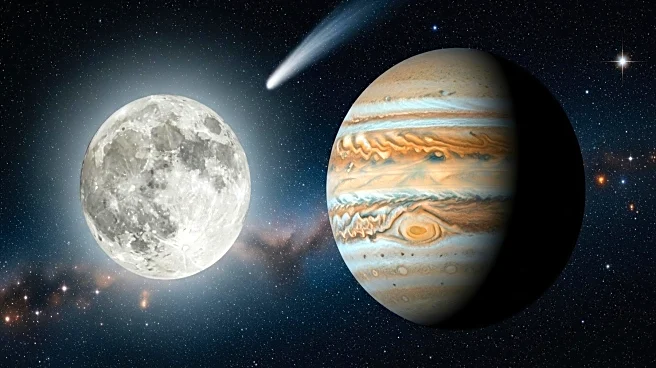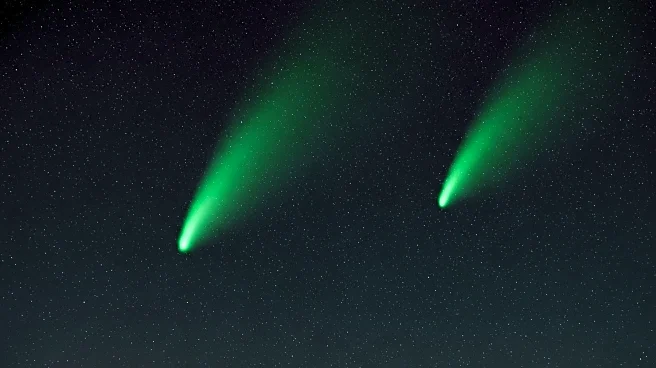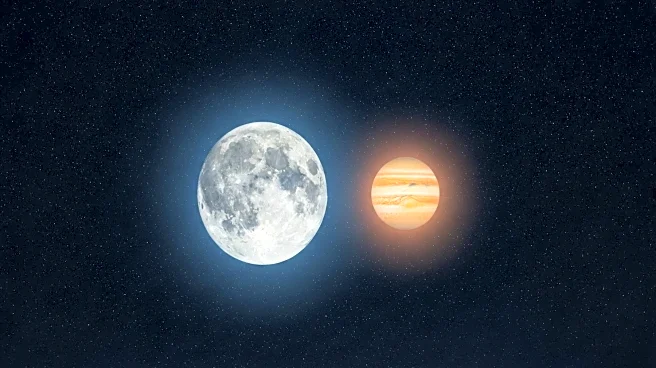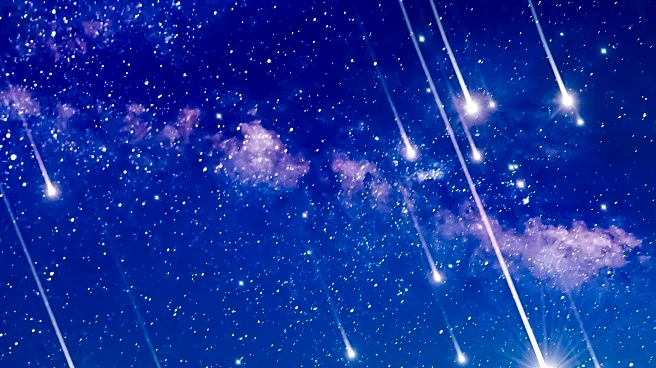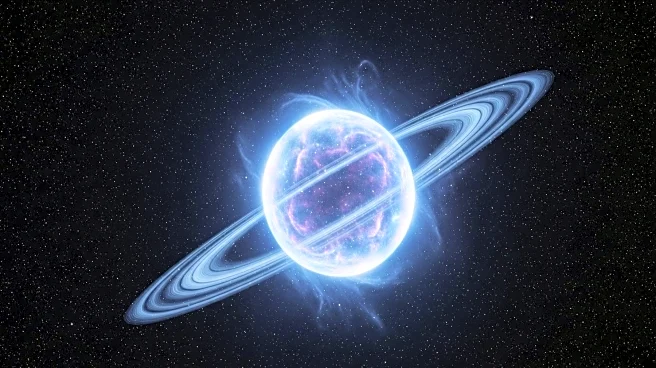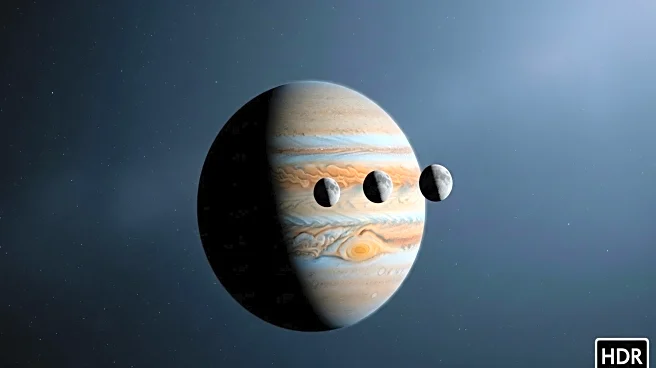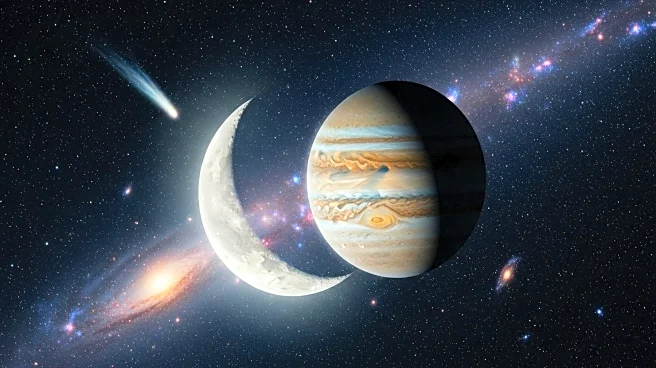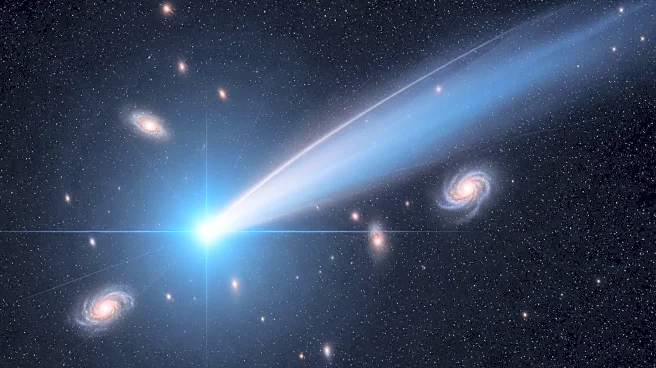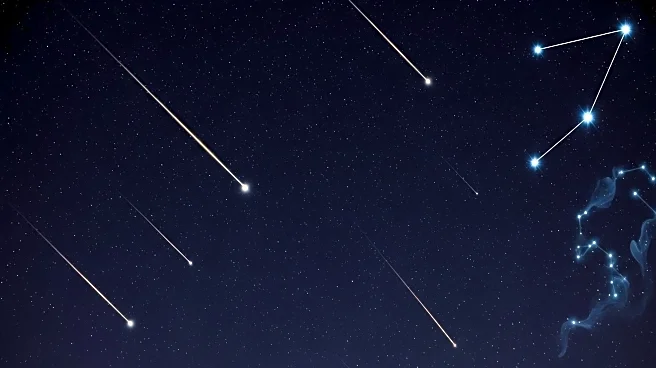What is the story about?
What's Happening?
On October 13, 2025, stargazers will have the opportunity to witness a celestial event as the moon, just past its last quarter phase, rises alongside Jupiter. The moon will appear above the east-northeastern horizon shortly before midnight, with Jupiter shining approximately 6 degrees to its right. This conjunction provides a striking visual, with Jupiter being the largest planet in the solar system, located 477 million miles away, while the moon is only 235,000 miles from Earth. Jupiter, currently in the constellation Gemini, will be visible in the southern sky, reaching its highest point around sunrise. Observers can use telescopes to view Jupiter's cloud belts and the Great Red Spot, along with its four Galilean satellites.
Why It's Important?
This celestial event is significant for astronomy enthusiasts and casual stargazers alike, offering a chance to observe Jupiter, one of the most prominent planets visible during the fall and winter seasons. The conjunction provides an opportunity to view Jupiter's atmospheric features and its moons, enhancing public interest in astronomy. Such events can inspire educational activities and increase awareness of celestial phenomena, potentially boosting interest in science and technology fields. The visibility of Jupiter in the northern hemisphere also highlights the advantages of geographic location in astronomical observations.
What's Next?
Looking ahead, a rare occultation of Jupiter by the moon is expected on October 6, 2026, visible across much of eastern and central North America. This event will be a significant highlight for stargazers, as nocturnal occultations of Jupiter are rare. The upcoming occultation will offer a spectacular view of Jupiter being eclipsed by a waning crescent moon, along with the visibility of the Galilean satellites. This event is anticipated to be a 'must-see' for astronomy enthusiasts, encouraging them to mark their calendars and prepare for the observation.
Beyond the Headlines
The conjunction of Jupiter and the moon not only provides a visual spectacle but also serves as a reminder of the dynamic nature of celestial bodies and their movements. Such events can foster a deeper appreciation for the universe and its complexities, encouraging individuals to explore astronomy further. The visibility of Jupiter's Great Red Spot and its changing size also offers insights into the planet's atmospheric dynamics, contributing to scientific understanding and research.
AI Generated Content
Do you find this article useful?
